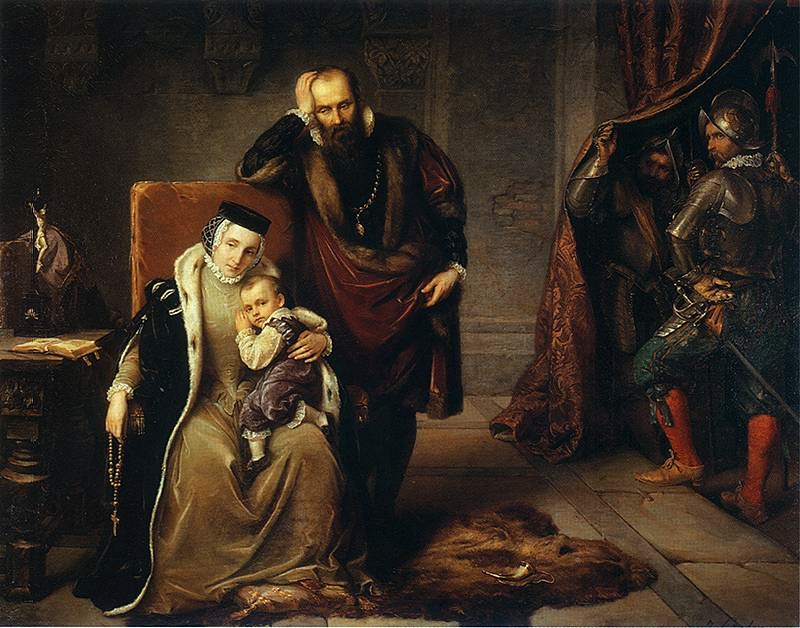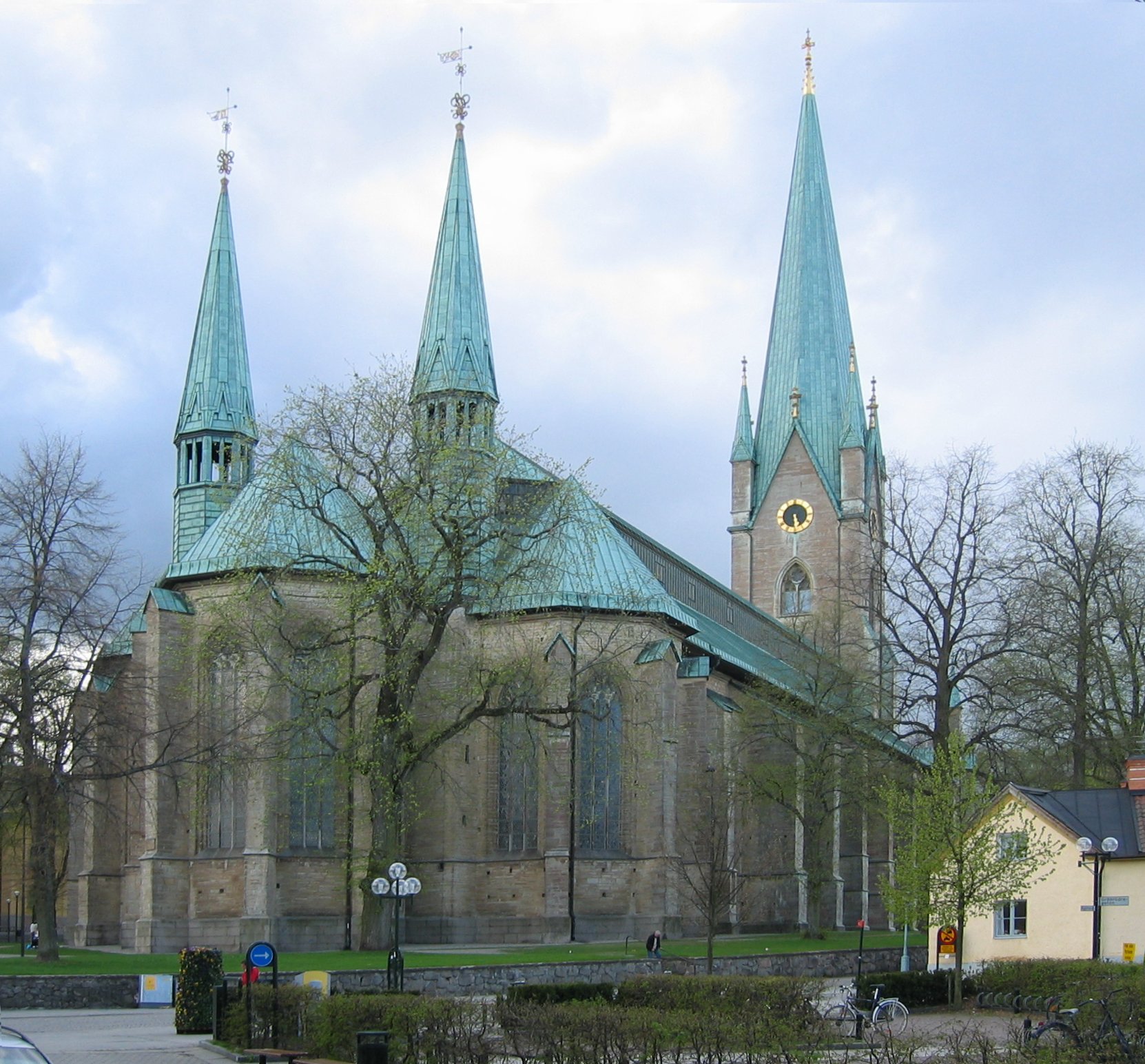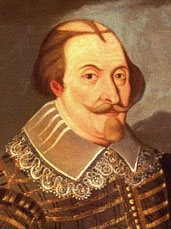|
Axel Kurck
Axel Jönsson Kurck (also known as Akseli Kurki in Finnish), born 1555, died 30 March 1630 in Nakkila) was a colonel in the Swedish army and nobleman. He was a member of the Kurki of Laukko family. Since 1582 Kurck was the lord of Koporye fortress in Ingria and later served as a judge in the Finnish hundreds of Upper Satakunta and Vehmaa. In 1593 he was invested with the lordship of Hermann Castle in Narva, Estonia. 20 November 1598 King Sigismund named him as the commander-in-chief of Finland.Svenskt biografiskt handlexikon (in Swedish). Retrieved 17 September 2013.Finnish National Biography (in Finnish). Retrieved 17 September 2013. At the [...More Info...] [...Related Items...] OR: [Wikipedia] [Google] [Baidu] |
Charles IX Of Sweden
Charles IX, also Carl ( sv, Karl IX; 4 October 1550 – 30 October 1611), reigned as King of Sweden The monarchy of Sweden is the monarchical head of state of Sweden,See the #IOG, Instrument of Government, Chapter 1, Article 5. which is a constitutional monarchy, constitutional and hereditary monarchy with a parliamentary system.Parliamentary ... from 1604 until his death. He was the youngest son of King Gustav I () and of his second wife, Margaret Leijonhufvud, the brother of King Eric XIV and of King John III of Sweden, John III, and the uncle of Sigismund III Vasa, Sigismund, who became king both of Sweden and of Crown of the Kingdom of Poland, Poland. By his father's will Charles received, by way of appanage, the Duchy of Södermanland, which included the provinces of Närke and Värmland; but he did not come into actual possession of them till after the fall of Eric and the succession to the throne of John in 1568. Both Charles and one of his predecessors, Eric XIV ( ... [...More Info...] [...Related Items...] OR: [Wikipedia] [Google] [Baidu] |
Jacob De La Gardie
Field Marshal and Count Jacob Pontusson De la Gardie ( Reval, 20 June 1583 – Stockholm, 22 August 1652) was a statesman and a soldier of the Swedish Empire, and a Marshal from 1620 onward. He was Privy Councilor from 1613 onward, Governor of Swedish Estonia in 1619–1622, Governor-General of Livonia in 1622–1628 (conquered by the Swedish Empire in 1621, and referred to as Swedish Livonia in 1629–1721), and Lord High Constable from 1620. He introduced reforms based on the then novel Dutch military doctrine into the Swedish army. He commanded the Swedish forces in Russia and against the Polish–Lithuanian Commonwealth. He also served as one of the five regents jointly ruling Sweden during the minority of Queen Christina. Biography Antoine Marie Jacob De la Gardie was born in Reval (today Tallinn), Estonia (then part of the Swedish Empire), as a son of Pontus De la Gardie and Sofia Johansdotter Gyllenhielm, the illegitimate daughter of King John III of Swed ... [...More Info...] [...Related Items...] OR: [Wikipedia] [Google] [Baidu] |
Ingrian War
The Ingrian War ( sv, Ingermanländska kriget) between the Swedish Empire and the Tsardom of Russia lasted between 1610 and 1617. It can be seen as part of Russia's Time of Troubles and is mainly remembered for the attempt to put a Swedish duke on the Russian throne. It ended with a large Swedish territorial gain (including Ingria) in the Treaty of Stolbovo, which laid an important foundation to Sweden's Age of Greatness. Prelude During Russia's Time of Troubles, Vasily IV of Russia was besieged in Moscow by the supporters of the second False Dmitry. Driven to despair by the ongoing Polish intervention, he entered into an alliance with Charles IX of Sweden, who was also waging war against Poland. The tsar promised to cede Korela Fortress to Sweden in recompense for military support against False Dmitry II and the Poles. The Swedish commander Jacob de la Gardie joined his forces with the Russian commander Mikhail Skopin-Shuisky and marched from Novgorod towards Moscow in ... [...More Info...] [...Related Items...] OR: [Wikipedia] [Google] [Baidu] |
Gripsholm Castle
Gripsholm Castle ( sv, Gripsholms slott) is a castle in Mariefred, Södermanland, Sweden. It is located by lake Mälaren in south central Sweden, in the municipality of Strängnäs, about 60 km west of Stockholm. Since Gustav Vasa, Gripsholm has belonged to the Swedish Royal Family and was used as one of their residences until the 18th century. It is now a museum, but is still considered to be a palace at the disposal of the King and as such it is part of the Crown palaces in Sweden. History Early history A fortress was built at the location in the 1370s by Bo Jonsson Grip. It was sold to Queen Margaret the I in 1404, and remained the property of the crown until it was acquired by Sten Sture the Elder, the Regent, in 1472 by an exchange of landed properties, whereby it became private, hereditary land of allodial status, to belong to the ownership of Regent Steen's own family. Steen donated the place for use as a Carthusian monastery, or charterhouse, in 1498, and the ... [...More Info...] [...Related Items...] OR: [Wikipedia] [Google] [Baidu] |
Linköping Bloodbath
The Linköping Bloodbath ( sv, Linköpings blodbad) on 20 March 1600 was the public execution by beheading of five Swedish nobles in the aftermath of the War against Sigismund (1598–1599), which resulted in the ''de facto'' deposition of the Polish and Swedish King Sigismund III Vasa as king of Sweden. The five were advisors to Catholic Sigismund or political opponents of the latter's uncle and adversary, the Swedish regent Duke Charles. Detention, trial and execution King Sigismund, eldest son to King John III, had inherited the crown from his father and been crowned the rightful king of Sweden after giving assurances that he would not act to aid the Catholic cause in Sweden during the mounting religious turmoil of the counter-reformation in the late 16th century. He violated the agreement, setting off civil war in Sweden. After trying to manage the Swedish situation from afar, Sigismund invaded with a mercenary army after receiving permission from the Polish legislatur ... [...More Info...] [...Related Items...] OR: [Wikipedia] [Google] [Baidu] |
Linköping
Linköping () is a city in southern Sweden, with around 105,000 inhabitants as of 2021. It is the seat of Linköping Municipality and the capital of Östergötland County. Linköping is also the episcopal see of the Diocese of Linköping (Church of Sweden) and is well known for its cathedral. Linköping is the center of an old cultural region and celebrated its 700th anniversary in 1987. Dominating the city's skyline from afar is the steeple of the cathedral, Domkyrka. Nowadays, Linköping is known for its university and its high-technology industry. Linköping wants to create a sustainable development of the city and therefore plans to become a carbon-neutral community by 2025. Located on the Östergötland Plain, Linköping is closely linked to Norrköping, roughly to the east, near the sea. History The city is possibly named after the '' Lionga ting'' assembly which according to Medieval Scandinavian laws was the most important thing in Östergötland. Exact l ... [...More Info...] [...Related Items...] OR: [Wikipedia] [Google] [Baidu] |
Arvid Stålarm The Younger
Arvid Stålarm, actually Arvid Eriksson (Stålarm) till Lindö i Tenala (c. 1540 or 1549 – May 1620, Gripsholm Castle) was a Swedish noble and soldier from the Finland-based Stålarm family. He is sometimes called "the Younger" to distinguish him from his grandfather and namesake who died in 1529. In his early career, Arvid Stålarm served as a captain in the Swedish navy. Later, he was promoted admiral, governor in Narva and Finland, and during the War against Sigismund led Finnish forces loyal to Sigismund against the latter's opponent and successor duke Charles of Södermanland, the later king Charles IX. Stålarm was taken prisoner and condemned to death in the Åbo bloodbath (1599) and again in the Linköping bloodbath (1600), but both times was spared from execution and remained in prison. In 1602, during the Polish–Swedish War (1600–11), he was released to command the Swedish forces in Livonia, who by then were in a precarious state and position. Stålarm ... [...More Info...] [...Related Items...] OR: [Wikipedia] [Google] [Baidu] |
Åbo Bloodbath
The Åbo Bloodbath ( sv, Åbo blodbad; fi, Turun verilöyly) of 10 November 1599 was a public execution in the Finnish town of Turku (Åbo), then part of the Kingdom of Sweden, in the context of the War against Sigismund and the Club War. Sweden was by then in the final phase of a civil war, with one faction supporting king Sigismund III Vasa, who also was king and Grand Duke of Poland–Lithuania, and another faction supporting duke Charles of Södermanland, the later Charles IX, Sigismund's paternal uncle. After winning the upper hand in the dispute, Charles crushed the last resistance to his rule, particularly in Finland, while Sigismund had already retreated to Poland. The forces opposing Charles in Finland were led by Arvid Stålarm and Axel Kurck (Kurk), who both became Charles' prisoners after the surrender of Åbo castle and further strongholds. Together with other prisoners, including two sons of Finland's previous commander Clas (Klaus) Fleming, they were tried by a ... [...More Info...] [...Related Items...] OR: [Wikipedia] [Google] [Baidu] |
Åbo
Turku ( ; ; sv, Åbo, ) is a city and former capital on the southwest coast of Finland at the mouth of the Aura River, in the region of Finland Proper (''Varsinais-Suomi'') and the former Turku and Pori Province (''Turun ja Porin lääni''; 1634–1997). The region was originally called Suomi (Finland), which later became the name for the whole country. As of 31 March 2021, the population of Turku was 194,244 making it the sixth largest city in Finland after Helsinki, Espoo, Tampere, Vantaa and Oulu. There were 281,108 inhabitants living in the Turku Central Locality, ranking it as the third largest urban area in Finland after the Capital Region area and Tampere Central Locality. The city is officially bilingual as percent of its population identify Swedish as a mother-tongue. It is unknown when Turku gained city rights. The Pope Gregory IX first mentioned the town ''Aboa'' in his ''Bulla'' in 1229 and the year is now used as the foundation year of Turku. Turku is the olde ... [...More Info...] [...Related Items...] OR: [Wikipedia] [Google] [Baidu] |
Russia
Russia (, , ), or the Russian Federation, is a transcontinental country spanning Eastern Europe and Northern Asia. It is the largest country in the world, with its internationally recognised territory covering , and encompassing one-eighth of Earth's inhabitable landmass. Russia extends across eleven time zones and shares land boundaries with fourteen countries, more than any other country but China. It is the world's ninth-most populous country and Europe's most populous country, with a population of 146 million people. The country's capital and largest city is Moscow, the largest city entirely within Europe. Saint Petersburg is Russia's cultural centre and second-largest city. Other major urban areas include Novosibirsk, Yekaterinburg, Nizhny Novgorod, and Kazan. The East Slavs emerged as a recognisable group in Europe between the 3rd and 8th centuries CE. Kievan Rus' arose as a state in the 9th century, and in 988, it adopted Orthodox Christianity from the ... [...More Info...] [...Related Items...] OR: [Wikipedia] [Google] [Baidu] |
Vyborg
Vyborg (; rus, Вы́борг, links=1, r=Výborg, p=ˈvɨbərk; fi, Viipuri ; sv, Viborg ; german: Wiborg ) is a town in, and the administrative center of, Vyborgsky District in Leningrad Oblast, Russia. It lies on the Karelian Isthmus near the head of the Vyborg Bay, to the northwest of St. Petersburg, east of the Finnish capital Helsinki, and south of Russia's border with Finland, where the Saimaa Canal enters the Gulf of Finland. The population of Vyborg is as follows: Located in the boundary zone between the East Slavic/Russian and Finnish worlds, formerly well known as one of the few medieval towns in Finland, Vyborg has changed hands several times in history, most recently in 1944 when the Soviet Union captured it from Finland during World War II. Finland evacuated the entire population of the city and resettled them within the rest of the country. On March 25, 2010, Dmitry Medvedev named Vyborg the " City of Military Glory". In Russia, a city can be ... [...More Info...] [...Related Items...] OR: [Wikipedia] [Google] [Baidu] |







